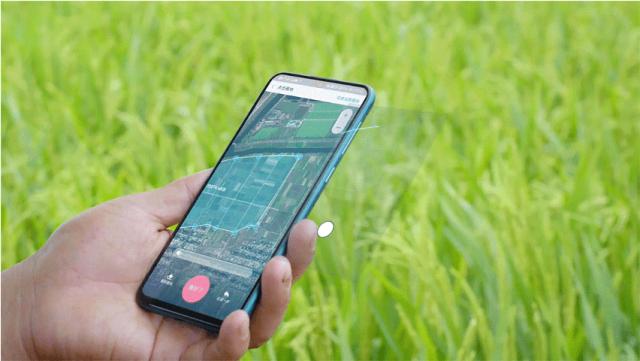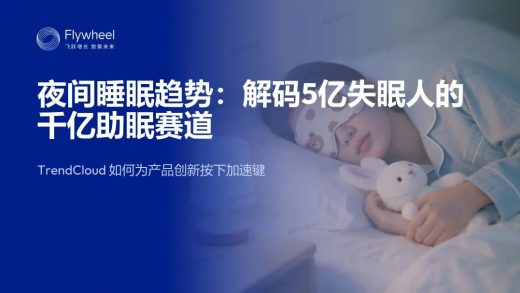
Positive Reviews: Breakthrough Practice of AI in Rural Areas, Injecting New Impetus into Agricultural Digitalization
The AI Agricultural Assistant and Harvest Card launched by MYbank are typical examples of the in – depth integration of AI technology and agricultural scenarios. Their innovative value and social significance show breakthroughs in multiple dimensions.
First of all, the universality of technology breaks the bottleneck of the “scarcity of expert resources” in rural areas. In China, the rural permanent population exceeds 465 million, and the actual agricultural population is about 250 – 270 million. However, resources such as professional agricultural technicians and financial advisors are extremely scarce. In the traditional model, it is almost impossible to provide each farmer with “agricultural technology + meteorology + finance” experts. The AI Agricultural Assistant, in the form of a “24 – hour online expert”, covers the scattered rural areas with scarce professional services in a low – cost and high – efficiency manner. For example, farmers only need to use their mobile phones to ask questions such as “What should I do if the rice leaves turn yellow?” or “How to take care of a sow after giving birth?”, and the AI can give scientific solutions based on local climate and soil data. In case of extreme weather, the system can also provide precise early warnings at the township level. This practice of “equal rights to expert services” directly lowers the technical threshold of agricultural production, helps farmers reduce losses caused by information gaps, and in essence, uses technological means to narrow the knowledge gap between urban and rural areas.
Secondly, the integrated service model of “production + finance” constructs a new ecosystem for agricultural digitalization. The AI Agricultural Assistant is not an isolated tool but is embedded in the comprehensive service system of MYbank’s Harvest Card. In addition to agricultural technology and meteorological functions, the Harvest Card also integrates rights and interests such as payment, loans, wealth management, agricultural supplies discount vouchers, and agricultural insurance, forming a closed – loop of “production support + financial services”. This design that “understands both production and finance” precisely meets the core needs of farmers. Agricultural production not only requires technical guidance but also needs financial support such as capital turnover and risk protection. For example, when the AI recognizes that farmers may need irrigation equipment due to drought, the system can simultaneously recommend suitable loan products. When farmers have idle funds, it can also provide low – risk wealth management options. This innovation of “scenario – based finance” is more in line with the actual situation of agricultural production than simple credit services and provides a replicable model for rural financial service models.
Moreover, the technology accumulation and implementation ability verify the feasibility of AI in the agricultural field. MYbank is not a novice in “bringing AI to rural areas”. The “Dashanqiao” satellite remote – sensing risk control system launched five years ago has accumulated mature experience. This system identifies crop types, scales, and growth conditions through satellite spectra, solving the core problem of “information asymmetry” in rural credit. As of the end of 2024, it has served 1.81 million growers, of which more than 80% are small farmers with less than 10 mu of land. The launch of the AI Agricultural Assistant is based on this in – depth precipitation of “technology + agriculture”, extending technologies such as satellite remote sensing and large models from a single risk control scenario to a wider range of production service scenarios. This path of “technology iteration + scenario expansion” proves that AI in the agricultural field can not only solve financial problems but also penetrate the entire production chain, providing a complete verification of “technology – scenario – value” for agricultural digitalization.
Finally, in terms of social value, it is in line with the rural revitalization strategy and promotes “digital inclusion”. MYbank puts forward the concept of “not leaving farmers behind in the era of AI”, which in essence is fulfilling the social responsibility of “digital inclusion”. One of the keys to China’s agricultural modernization is to improve farmers’ digital capabilities. The AI Agricultural Assistant reduces the psychological and operational costs for farmers to use new technologies through its “low – threshold and highly practical” interactive design (such as colloquial question – asking and one – key switching to manual service). Data shows that the number of users of the Harvest Card exceeded one million in the first week of its launch, and the demand for checking the weather and learning agricultural technology was the most vigorous, indicating that farmers’ acceptance of such services far exceeded expectations. This practice of “technological penetration” not only helps improve the efficiency of agricultural production but also enhances farmers’ sense of gain through technological empowerment, injecting “digital impetus” into rural revitalization.
Negative Reviews: Potential Challenges and Shortcomings to Be Overcome for AI in Rural Areas
Although the exploration of the AI Agricultural Assistant is worthy of recognition, as a new thing, it still faces real challenges such as technology adaptability, service depth, and competitive pressure. We need to be vigilant against the disconnection between “technological ideals” and “real – world needs”.
Firstly, technology adaptability may be limited by the differences in the digital literacy of rural users. The efficient use of AI tools depends on users’ basic operation ability. However, the age structure of the rural population in China is relatively old, and some farmers are not familiar with functions such as smartphones, voice/text input. For example, if farmers are not good at inputting questions or cannot accurately describe agricultural problems (such as the specific symptoms of “yellow rice leaves”), the AI may not be able to provide accurate answers. Even if voice input is supported, the accuracy of dialect recognition may also affect the interaction experience. In addition, although the system currently supports “human – machine collaboration” (switching to manual service when the AI cannot answer), the timeliness and professionalism of the manual response (the coverage and service timeliness of more than 1000 agricultural technicians) still need to be verified. If farmers encounter urgent problems during the busy farming season (such as sudden pests and diseases), a delay in the manual response may lead to an expansion of losses. This mismatch between “advanced technology” and “user ability” may affect the actual usage rate and user stickiness of the product.
Secondly, concerns about data security and privacy protection need continuous attention. MYbank emphasizes “bank – level encryption” to protect users’ consultation records and location information. However, rural users are generally less sensitive to data security than urban users, and there may be a risk of “unconscious leakage”. For example, some farmers may authorize excessive permissions due to not understanding the privacy policy or leak key information (such as planting scale and loan demand) when using the device in public places. In addition, the particularity of agricultural data (such as soil, meteorological, and crop growth data) involves information related to national food security. If the system suffers a cyber – attack or data leakage, it may trigger more extensive risks. Although MYbank conducts regular “system check – ups”, as the user scale expands (exceeding one million in the first week), the data volume increases exponentially. Whether the existing security protection can cope with more complex attacks (such as targeted attacks on agricultural scenarios) still needs long – term observation.
Thirdly, the service depth and long – term sustainability are facing tests. Currently, the level of the AI Agricultural Assistant is defined as that of an “undergraduate”. Although it can solve common problems, when facing complex agricultural scenarios (such as cross – crop pests and diseases and comprehensive responses under extreme climates), it still needs to rely on manual experts. To train it to be a “doctoral student” or even a “real expert”, it requires continuous investment of a large amount of agricultural professional data (such as detailed technical manuals for different regions and different crops) and expert experience, which puts forward higher requirements for the cost of data collection, annotation, and model training. In addition, the “special services” of the Harvest Card (such as agricultural supplies discount vouchers and agricultural insurance) rely on cooperation with external institutions. If the interest – distribution mechanism of the cooperation partners (such as insurance companies and agricultural supplies suppliers) is unstable, it may lead to a reduction in service rights and interests, affecting the user experience. More importantly, as a commercial institution, MYbank needs to balance “inclusiveness” and “profitability”. Although the marginal cost of serving farmers is currently low, as the user scale expands and the service depth increases, how to achieve sustainable commercial returns through financial services (such as loans and wealth management) and avoid falling into the dilemma of “high investment, low return” is still an issue to be solved.
Fourthly, the differential advantages under competitive pressure need continuous strengthening. Song Xiao mentioned that if general large models (such as DeepSeek and Doubao) launch similar products, MYbank’s competitiveness lies in its positioning as an “agricultural expert” and the integration of “production + finance” services. However, the technology iteration speed of general large models is extremely fast. Once they improve their professionalism through “fine – tuning with agricultural data” or cooperate with other agricultural platforms (such as agricultural e – commerce and agricultural supplies enterprises) to integrate services, they may quickly narrow the gap. For example, if a general large model accesses the authoritative data of the Ministry of Agriculture and Rural Affairs and cooperates with platforms such as Pinduoduo’s “Farmland Cloud Group – buying”, it can also provide comprehensive services of “agricultural technology + sales + finance”. MYbank’s current advantages (such as the “Dashanqiao” satellite remote – sensing data and cooperation with the Ministry of Agriculture and Rural Affairs) form a barrier, but it needs continuous investment in technology R & D (such as multi – modal interaction and more accurate agricultural knowledge graphs) and ecological construction (such as in – depth binding with local governments and agricultural cooperatives). Otherwise, it may be quickly caught up by late – comers.
Suggestions for Entrepreneurs: AI in Rural Areas Requires Both “Technological Sinking” and “In – depth Exploration of Demands”
MYbank’s practice provides a reference path for bringing AI to rural areas. However, if entrepreneurs want to make breakthroughs in the field of agricultural digitalization, they need to focus on the following directions:
Focus on niche scenarios and solve “real needs”: Agricultural scenarios are highly dispersed (planting, breeding, agricultural machinery, etc.), and the demands vary greatly in different regions (such as the black soil in Northeast China and the hilly areas in the South). Entrepreneurs should avoid the “big and comprehensive” generalized design. They should conduct in – depth field investigations to dig out the “high – frequency pain points” of farmers (such as pest and disease identification, slow approval of small – scale loans, and responses to extreme weather) and focus on a single scenario. For example, they can develop a dedicated AI assistant for “fruit tree planting”, integrating vertical services such as pest and disease atlases, fertilization cycles, and insurance claims, which is more likely to gain users’ trust than an “all – around” tool.
Build a closed – loop service of “technology + ecosystem”: Agricultural problems often involve multiple links such as production, circulation, and finance. A single technological tool is difficult to solve the full – process needs. Entrepreneurs should learn from MYbank’s integration idea of “production + finance” and cooperate with agricultural cooperatives, agricultural supplies enterprises, insurance companies and other entities to embed technological services into the agricultural ecosystem. For example, an AI tool can be connected to an agricultural supplies e – commerce platform. When users query “rice fertilization suggestions”, the system can simultaneously recommend suitable fertilizers and provide purchase discounts. Or it can be linked with an agricultural insurance platform to automatically recommend disaster insurance according to the crop growth situation, forming a closed – loop of “technological guidance – production support – risk protection”.
Attach importance to “user education” and “interaction design”: The digital literacy of rural users varies greatly. Entrepreneurs need to lower the threshold of technology use. On the one hand, they can improve users’ operation ability through “off – line training + on – line guidance” (such as making dialect – version usage tutorials and setting up experience points in township service stations). On the other hand, they should optimize the interaction design (such as supporting voice input, dialect recognition, and graphic/video feedback) to make farmers “able to use and willing to use”. For example, for elderly users, a “one – key call” function can be designed to directly connect to manual experts, reducing the barriers of text input.
Strengthen data security and compliance capabilities: Agricultural data involves privacy and national security. Entrepreneurs need to establish strict data collection, storage, and use specifications. They can refer to MYbank’s “bank – level encryption” model, cooperate with authoritative institutions (such as agricultural departments) to obtain compliant data, and use blockchain technology to achieve data traceability to avoid leakage risks. At the same time, they need to explain the “data usage” to farmers in plain language (such as “only used to provide planting suggestions and will not be leaked to third parties”) to enhance user trust.
Balance “inclusiveness” and “business” and explore sustainable models: The core of agricultural digitalization is “inclusiveness”, but business sustainability is the prerequisite. Entrepreneurs need to design a profit model with “low marginal cost + high user stickiness”. For example, they can attract users through technological services and then realize monetization through financial services (such as small – scale loans and insurance commissions) or value – added services (such as agricultural supplies sales commissions). MYbank’s idea of making a profit through the integration of financial services in the “Harvest Card” is worthy of reference, but they need to avoid over – relying on a single source of income. They can explore a hierarchical model of “free basic services + paid value – added services” (such as providing free agricultural technology consultations and charging for unlocking “one – on – one expert guidance”).
Build differential technological barriers: Facing the competition of general large models, entrepreneurs need to build a “technological moat” in the vertical field. For example, they can accumulate regional agricultural data (such as soil, climate, and crop variety data in a certain county) to train more accurate local models. Or they can combine Internet of Things devices (such as soil sensors and weather stations) to obtain real – time data and improve the timeliness of AI suggestions. MYbank’s “Dashanqiao” satellite remote – sensing system builds a barrier through “exclusive data + dedicated models”. Entrepreneurs can learn from this idea of “scenario – specific technology” to avoid direct competition with general large models.
Bringing AI to rural areas is not a “technological show” but a long – term practice that requires both “technological sinking” and “in – depth exploration of demands”. MYbank’s exploration proves that as long as we truly focus on farmers’ needs, integrate resource ecosystems, and balance business and inclusiveness, AI can definitely become the “digital engine” for rural revitalization. For entrepreneurs, the key is to put aside the “technological superiority” and deeply penetrate into rural areas as “service providers” to solve real problems with technology, so as to find their own opportunities in the blue ocean of agricultural digitalization.




